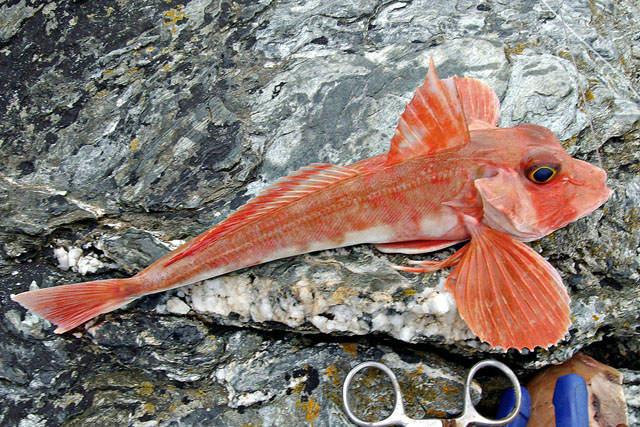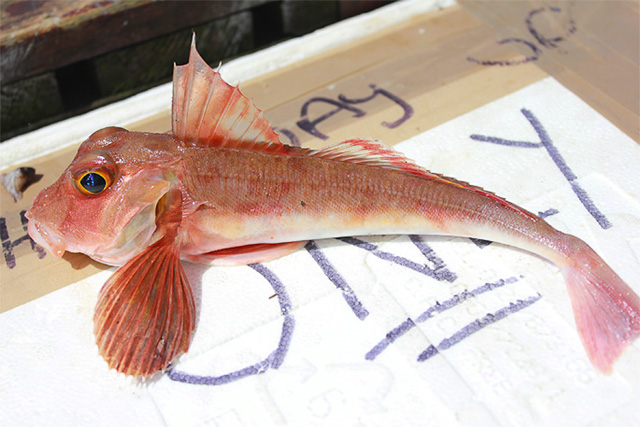BACK TO WEATHER-BLOG MENU
The Welsh Weather & Dyfi Valley landscapes Image-Library - Click HERE
 It's February 12th and time for a newsflash!
It's February 12th and time for a newsflash!Shore Fishing - a guide to Cardigan Bay - has arrived from the printers, thus seeing an 18-month project completed. It was published by Coch-y-Bonddu Books of Machynlleth, and following the launch on February 20th, it will be is now available via their website, their shop and whoever else we manage to persuade to stock it!
The seeds of the idea were planted in 2008 when I set myself a target of 30 different shore species to be caught from the Welsh coast. Primarily I fish for my supper, but setting oneself the occasional challenge is good because it hones your skills and really makes you think about what you are doing.
Taking good quality digital images of the fish is all part of the game in species-hunting, and I soon amassed quite a collection, and wondered what use they could be put to.
In 2009, a new target of 40 was set and this proved to be a real challenge, an oversight in September making this harder than it needed to be! The target was reached in December of that year. The collection of photos had grown again: some species caught in 2008 were not caught in 2009, and vice-versa.
Fast-forward to September 2011 and with work thin on the ground, I decided to sit and download 30 years worth of sea angling experience into a manuscript. Many weeks of hard work later I had something to take to a publisher and Paul Morgan of Coch-y-Bonddu Books was a good first cast! There followed much photography around the coast in the spring of 2012, lots of editing over the summer and working with the excellent Pete Mackenzie on layout through the autumn until, by the start of winter, we had a product.
The book starts with the very basics of angling to help beginners and makes a strong pont of sustainability: one example being not to keep catching mackerel when you have enough for the barbecue - because handling mackerel and throwing them back will likely kill them. It explains in detail how the weather and tides work and how to stay safe. It describes how Cardigan Bay came into existence after the end of the last ice-age and what different fishing grounds formed as a consequence. It then embarks on a tour around the bay from St Davids round to Aberdaron, not giving away specific fishing marks but noting the distribution of the different types of ground.
There follows the 'how to' section: firstly how to fish the different types of ground, for they respond to different tactics, and then how to fish for key species - or being in the right place at the right time of year.
The final major section of the book concerns fish identification. On fishing forums, threads entitled "Fish ID Please!" are a frequent sight, so here was a chance to put the images from 2008-9 to good use. With these, and with a few other images obtained from fellow anglers, we have managed to illustrate some 65+ species. This is by no means exhaustive, but it covers everything that most of us regulars catch and a few none of us are likely to catch!
There's a funny story in this. In 2009 I had a couple of productive sessions at Raven's Point on Anglesey, where red and grey gurnards are common - the photo of a red gurnard below was one of many I had:

While scrounging images off people, Holyhead-based charter-skipper Gethyn Owen sent me a batch of photos, among which was this one of a rare streaked gurnard. Although red in colour, it is the vertical streaks along the lateral line that are diagnostic and, even more so, the very blunt shape of the forehead, compared to the red gurnard's concave snout:

Checking through my photos of 'red gurnards', I discovered I had caught and overlooked a streaked gurnard at Raven's point in 2009:

An oversight maybe, but one that had me chasing my tail around Aberystwyth and Tywyn during a weekend-long weather-window in mid December of that year for supposed species #40 - a five bearded rockling - defeated twice by dense floating seaweed and large swells, I finally managed to catch 7 species on a Sunday evening on the Stone Jetty at Aberystwyth - including two five-bearded rocklings! Had I but known!
Streaked gurnards are listed as present off NW Wales by texts over a century old, and I suspect many are missed as 'just another red'. Makes one wonder what else is out there! That's one thing I like about fishing - there are always surprises in store.
Since then, it's been back to catching supper, though in fact many of the species are edible. Gurnards, provided they are in-size, are tasty fish and one of the best of the lot is the greater weever, one of only three venomous fish found in the Bay (the others being the lesser weever and the stingray). You just need to be very careful when preparing them! There are some though that whilst edible are not as abundant as they were - rays, for example, because of commercial over-fishing. In the book, any such fish are highlighted with the advice that they should be carefully released. Our fish-stocks are such a valuable natural resource and they need to be treated far more carefully than they are. Done with care, angling is the most sustainable way of fishing because it is relatively very selective - just compare it to the thousands upon thousands of tonnes of 'discards' that are tipped back dead into the sea by industrial fishing-vessels. I hope that this book will bring people to the activity armed with a good understanding of careful angling, and perhaps raise awareness more widely about looking after our fish-stocks, so they may continue to provide food for many generations to come.
The Welsh Weather & Dyfi Valley landscapes Image-Library - Click HERE
BACK TO WEATHER-BLOG MENU